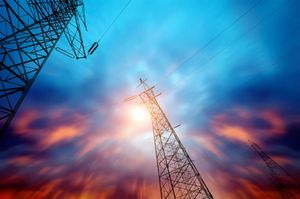A net-zero, stormproof community success story. Is this the future of housing?

Hurricane Helene and Hurricane Milton touched down just weeks apart and left more than three million Florida residents without power.
However, there was one energy-efficient, sustainable Florida community where the lights remained on.
At Hunters Point, homes protected by hurricane-proof windows and doors didn’t flood. The waterfront development in Cortez, Florida, was built by the developer Pearl Homes.
Pearl Homes makes the case that its property is the “the first and only net-zero single-family home community in the United States.” Pearl Homes defines net-zero as homes that produce more energy than they consume.
“The streets surrounding the homes are intentionally designed to flood so houses don’t. Power and internet lines are buried to avoid wind damage. The sturdy concrete walls, hurricane-proof windows and doors are fortified with a layer of foam insulation, providing extra safety against the most violent storms,” reported CNN in a recent article on Hunters Point.
After the storms, the lights stayed on all night and in the days to come, thanks to solar power and battery storage.
“Everybody around us was completely dark at like five in the morning, and you see the lights on in our houses,” Marshall Gobuty, the founder and president of the Pearl Homes development, told CNN. “So, it really was a test of why we did this.”
Mobile homes destroyed
Hundreds of mobile homes in Bradenton Beach, Florida, did not have these energy efficient, stormproof luxuries. They were badly damaged by the dual hurricanes and are now likely to be condemned. Many residents in the mobile home community, Sandpiper Resort, were told by the city that any home with flooding from either of the two hurricanes “had to be destroyed.”
The only other option for remaining in the community is for mobile homeowners to build homes higher than 12 feet in order to comply with the city’s flood ordinance. Considering the high cost of rebuilding, this option is well beyond the financial means of most of the residents.
Not surprisingly, the mobile home residents are devastated.
“Who knows where we are going to go. I have no clue at this point,” Bill Wisotzke, the president of the board of directors at the Sandpiper Resort, told ABC 7 in an interview.
Built to withstand a Category 5
When Hunters Point was built, developers wanted the homes to withstand a Category 5 hurricane. The U.S. Green Building Council says the residential development is the first in the world to receive a Leadership in Energy and Environmental Design (LEED) net-zero certification.
CNN reports that each of the three-story homes is designed with a ground floor as a garage with flood vents to drain rising water. The living space begins on the second floor, built 16 feet above sea level. Steel straps secure the entire home from the roof to its foundation. To top it off, solar panels are affixed to the roof on raised vertical seams, to prevent them from flying off during high-wind storms.
Because the property sits in a major flood zone, the homes had to be elevated by at least 3 feet. But the developers elevated the homes by 7 feet to provide extra safety.
Not surprisingly, all of these energy-efficient, hurricane- and flood-proof features are costly. The homes in Hunters Point sell for $1.4 million to $1.9 million, compared to other homes in the area going for approximately $600,000.
Building a sustainable home
A sustainable home is built using high-quality building materials that conserve energy and water while reducing waste. A sustainable home also helps protect residents from the effects of climate change and volatile weather events. Because heating and cooling eat up the largest portion of a homeowner’s electricity bill, installing insulated doors, energy-efficient windows, lighting, and appliances helps reduce costs.
In the future, especially in areas susceptible to flood and hurricane damage, homeowners will want greener homes. This involves more than simply putting in energy-efficient appliances, LED lighting, or solar panels.
From the ground up, new generation homes must be built with energy efficiency in mind. There are a few steps that homebuilders can take to accomplish that goal. For starters:
- Self-sufficient, sustainable homes that use eco-friendly materials.
- Homes that help reduce the effects of climate change including hurricanes and floods.
- Using the surrounding environment to help heat or cool homes while also reducing energy costs.
- Installing geothermal heat pumps and wind or solar energy systems including solar panels and a solar water heater.
- Burying the power and internet lines.
- Hurricane-proofing windows and doors.
Admittedly, all of these features come at a high cost, but radically increase the survivability of a home. To reduce a few of the expenses, some homeowners may qualify for an annual residential clean energy tax credit from the IRS.
(More information on that tax credit can be found at irs.gov).
If you’re a homeowner, you can consider storm-resistant upgrades such as impact windows and other measures to prevent water and wind damage.
Conclusion
While energy independence is a worthy goal, it’s essential to protect properties from hurricanes, floods, and power outages. As climate change intensifies, expect to see even more destructive weather-related events that damage property and cost lives.
Although currently expensive, building a sustainable home should be incorporated into the designs of future homes and communities. A sustainable house is not only healthier for the environment and residents, but should save money on water and energy.
The goal is to build more energy independent houses that use less energy and depend less on utility companies, to bring down a consumer’s electricity bill. For homeowners looking to save energy while living in an environmentally-friendly, energy-efficient house, visit the Department of Energy website to explore more information.
Read more: Understand the difference between ESG as a process versus ESG as a product
Photo courtesy of Pearl Homes Developments.
More News
View More




Recent Quotes
View More
Quotes delayed at least 20 minutes.
By accessing this page, you agree to the Privacy Policy and Terms Of Service.